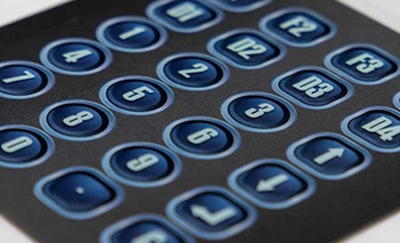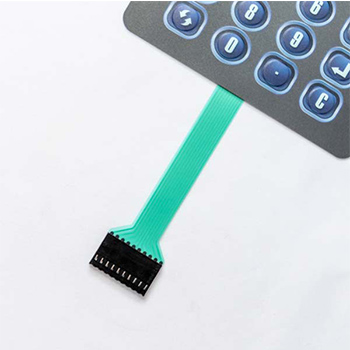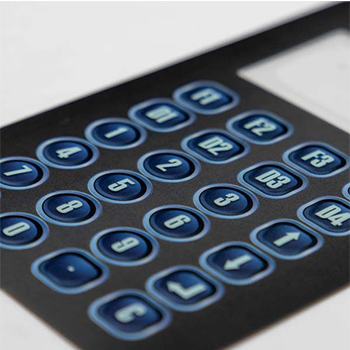
As one of membrane switch products, Membrane keyboards are a popular input device used in many modern electronic devices. They are known for their durability, low cost, and quiet operation. In this article, we will explore the working principle of membrane keyboards and understand how they function.


A membrane keypad is an electronic device that uses a thin and flexible membrane to detect and register keystrokes. These keyboards are typically made up of three layers: the top layer, or membrane, a middle layer, or spacer, and a bottom layer, or circuit board.
The top layer, or membrane, is a thin and flexible film that contains a pattern of symbols or letters printed on it. This layer is typically made of a soft plastic material that is sensitive to pressure.
The middle layer, or spacer, is a thin piece of plastic or rubber that separates the top and bottom layers. This layer is designed to keep the top and bottom layers from making contact until a key is pressed.
The bottom layer, or circuit board, is a thin printed circuit board that contains the electrical contacts or switches. This layer is designed to detect and record the keystrokes made on the keyboard.
When a key is pressed on a membrane keyboard, the top layer, or membrane, is deformed, and the two layers come in contact. This contact creates a connection between the electrical contacts on the bottom layer or circuit board. The electrical contacts then register the keystroke and send an electrical signal to the computer or device.
The key matrix is the arrangement of electrical contacts on the circuit board. The key matrix is the key to the design of the membrane keyboard. The keys are arranged in a grid, with rows and columns of electrical contacts. Each key has a unique location on the key matrix, and the electrical contacts on the bottom layer correspond to the location of each key.
When a key is pressed, the electrical contacts on the bottom layer are connected, and the computer or device reads the location of the key from the key matrix. The computer or device then translates this location into a character or command.
Membrane switches have several advantages over other types of keyboards, including:
Durability: Membrane keyboards are more durable than traditional mechanical keyboards because they have no moving parts, which means they are less likely to break.
Low cost: Membrane keyboards are cheaper to produce than mechanical keyboards because they require fewer components.
Quiet operation: Membrane keyboards are much quieter than mechanical keyboards because they use a soft plastic membrane to register keystrokes instead of noisy mechanical switches.
Water-resistant: Membrane keyboards are typically water-resistant, which makes them a popular choice for use in wet or humid environments.
In conclusion, membrane keyboards provided by membrane keypad manufacturer are a popular input device used in many electronic devices because of their durability, low cost, and quiet operation. They work by using a thin and flexible membrane that detects and registers keystrokes. When a key is pressed, the electrical contacts on the bottom layer are connected, and the computer or device reads the location of the key from the key matrix. The advantages of membrane switch panel include their durability, low cost, quiet operation, and water resistance. If you're in the market for a new keyboard, consider a membrane keyboard as a viable option.